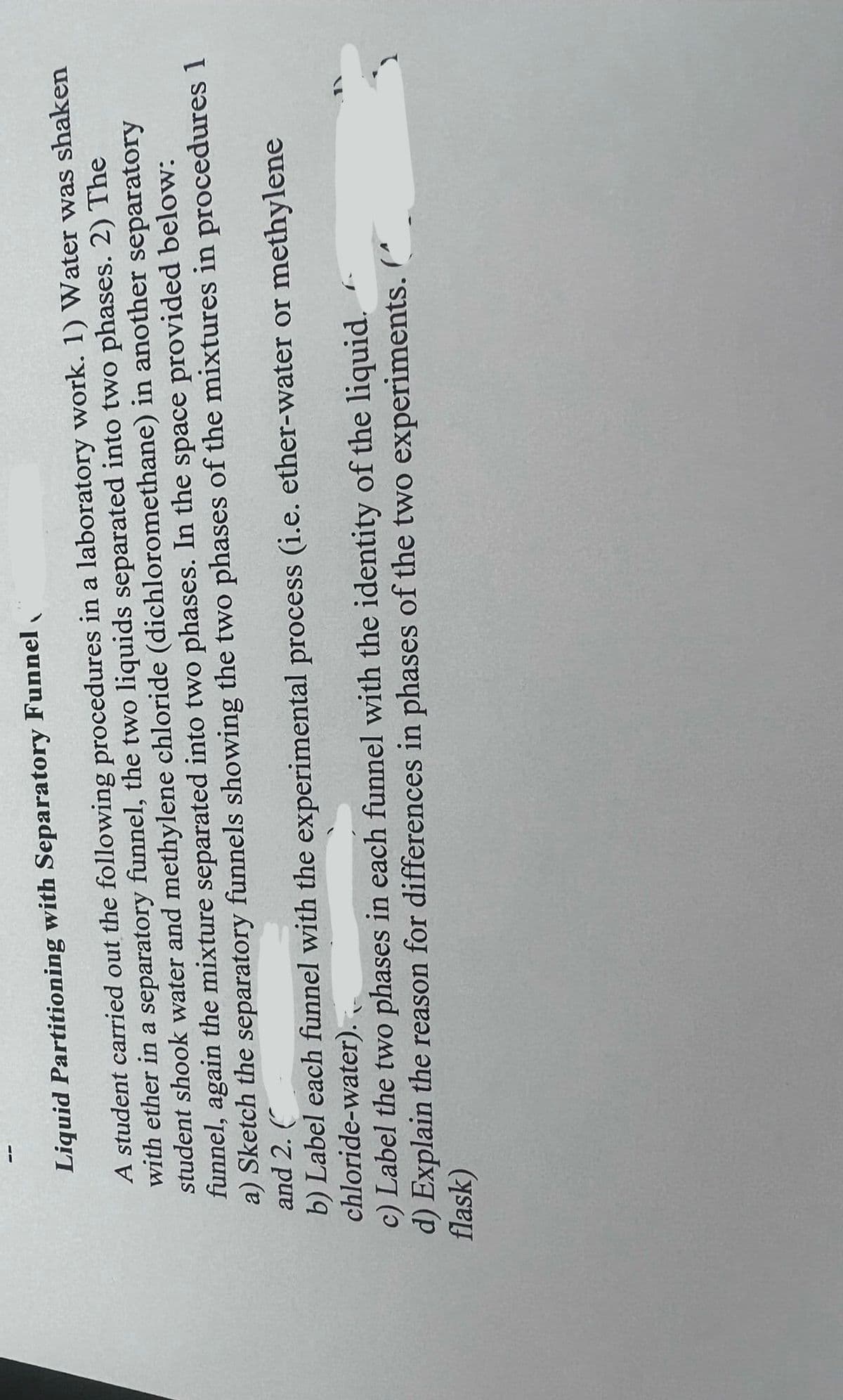Liquid Partitioning with Separatory Funnel A student carried out the following procedures in a laboratory work. 1) Water was shaken with ether in a separatory funnel, the two liquids separated into two phases. 2) The student shook water and methylene chloride (dichloromethane) in another separatory funnel, again the mixture separated into two phases. In the space provided below: a) Sketch the separatory funnels showing the two phases of the mixtures in procedures 1 and 2. ( b) Label each funnel with the experimental process (i.e. ether-water or methylene chloride-water). c) Label the two phases in each funnel with the identity of the liquid. d) Explain the reason for differences in phases of the two experiments. flask)
Liquid Partitioning with Separatory Funnel A student carried out the following procedures in a laboratory work. 1) Water was shaken with ether in a separatory funnel, the two liquids separated into two phases. 2) The student shook water and methylene chloride (dichloromethane) in another separatory funnel, again the mixture separated into two phases. In the space provided below: a) Sketch the separatory funnels showing the two phases of the mixtures in procedures 1 and 2. ( b) Label each funnel with the experimental process (i.e. ether-water or methylene chloride-water). c) Label the two phases in each funnel with the identity of the liquid. d) Explain the reason for differences in phases of the two experiments. flask)
Principles of Instrumental Analysis
7th Edition
ISBN:9781305577213
Author:Douglas A. Skoog, F. James Holler, Stanley R. Crouch
Publisher:Douglas A. Skoog, F. James Holler, Stanley R. Crouch
Chapter33: Automated Methods Of Analysis
Section: Chapter Questions
Problem 33.6QAP
Related questions
Question

Transcribed Image Text:Liquid Partitioning with Separatory Funnel
A student carried out the following procedures in a laboratory work. 1) Water was shaken
with ether in a separatory funnel, the two liquids separated into two phases. 2) The
student shook water and methylene chloride (dichloromethane) in another separatory
funnel, again the mixture separated into two phases. In the space provided below:
a) Sketch the separatory funnels showing the two phases of the mixtures in procedures 1
and 2. (
b) Label each funnel with the experimental process (i.e. ether-water or methylene
chloride-water).
c) Label the two phases in each funnel with the identity of the liquid.
d) Explain the reason for differences in phases of the two experiments.
flask)
Expert Solution
This question has been solved!
Explore an expertly crafted, step-by-step solution for a thorough understanding of key concepts.
Step by step
Solved in 2 steps with 1 images

Recommended textbooks for you

Principles of Instrumental Analysis
Chemistry
ISBN:
9781305577213
Author:
Douglas A. Skoog, F. James Holler, Stanley R. Crouch
Publisher:
Cengage Learning



Principles of Instrumental Analysis
Chemistry
ISBN:
9781305577213
Author:
Douglas A. Skoog, F. James Holler, Stanley R. Crouch
Publisher:
Cengage Learning

